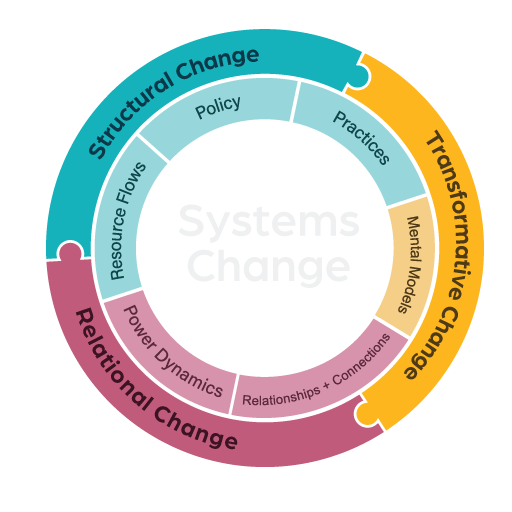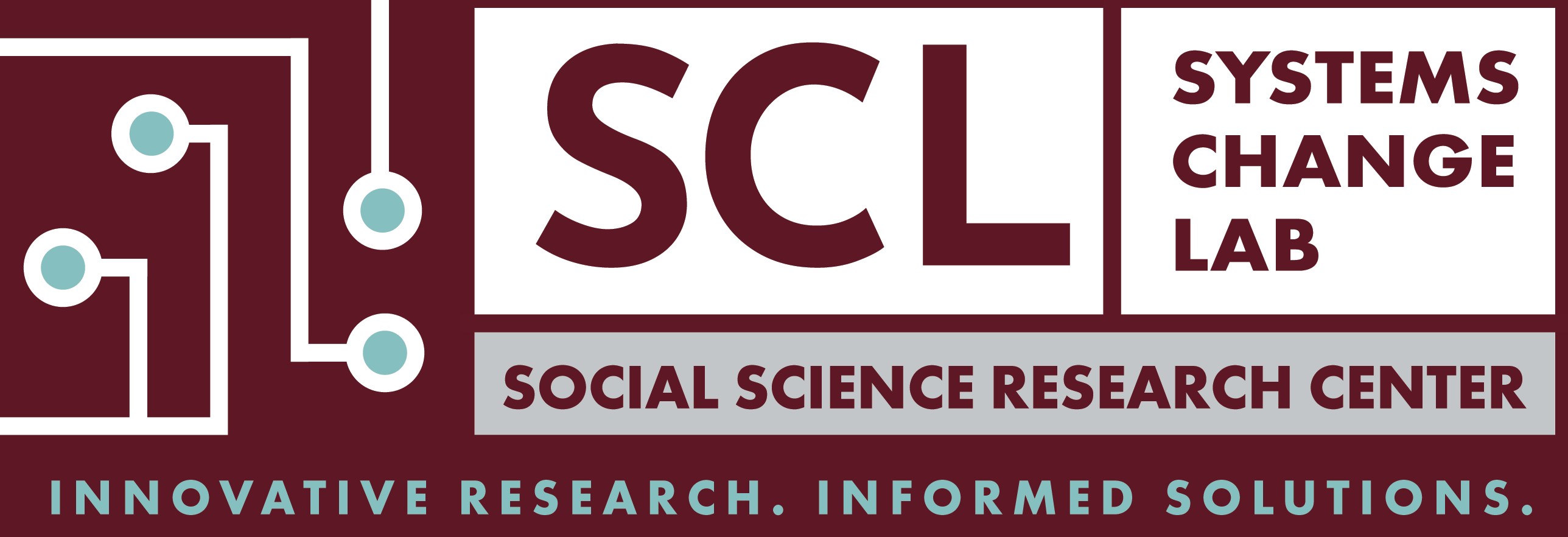A system is a group of variables that interact with each other according to a set of rules that establish a pattern of behavior over time.
What is Systems Thinking?
Using this approach can help identify solutions to chronic, complex problems and achieve meaningful goals. It’s important to look closely at the underlying structural components of systems to understand why specific trends and conditions are occurring.

Six Elements of Systems Change
Systems are often made up of variables such as those in this systems change diagram.
We can help you identify what these variables are for the systems with which you are working.
What Systems Change Can Do For You
Sometimes, solving problems requires considering many different factors simultaneously. The root of the problem may stem from a lack of trust or shared understanding, inadequate communication or coordination, or insufficient resources. Occasionally, policies and practices just do not work to accomplish the desired goal.
Systems Change Examples
Consider some examples of problems that can occur within organizations or among organizations and individuals:
- Residents are not using a city’s food bank services as expected
- A foundation isn’t sure if it is meeting the goals laid out in its strategic plan
- A patient is not successfully transitioning from one health care provider’s services to another’s
- A state agency has limited funds and needs better information to prioritize client needs
- Several disability rights advocacy groups are duplicating work, causing funding inefficiencies
The Systems Change Lab is a team of researchers housed at the Social Science Research Center at Mississippi State University. We work with partners across the nation to address issues like these, using comprehensive research services to analyze problems and offer solutions.
Whether you work with a government entity, foundation, or private organization, we can provide technical guidance to empower you to make well-informed decisions to solve your complex problems.




